8 things people with tidy gardens always do – for an elegant, serene outdoor space
Discover the designer secrets behind keeping a neat and tidy garden all year round
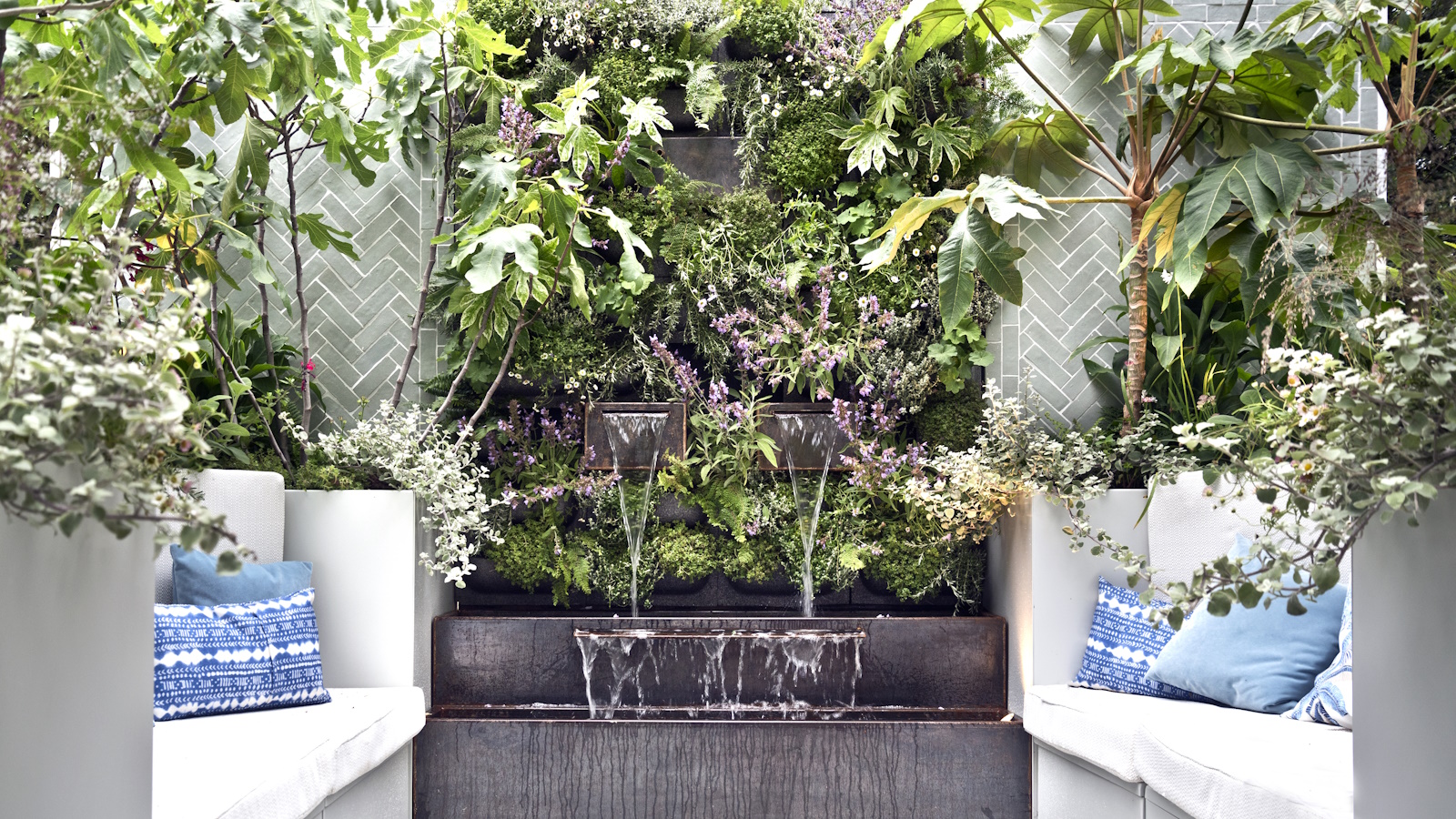

Discovering how to maintain a tidy garden can be hugely rewarding. After all, there is nothing restful or inviting about gazing upon a cluttered, ill-designed or weed-choked backyard.
Adopting some simple design rules as well as practical tips will not just save you valuable time and effort, but will result in a plot to be proud of. From pro designer tricks for visually sharpening border edges and organising plant-filled beds, to keeping on top of pruning, your backyard ideas will be nipped into shape in no time.
Achieving a tidy garden of course means different things to different people. Rather than committing to an endless list of seasonal tasks, work out which are the most important for you and your plot. Undertaking a few small jobs regularly can have a huge impact on your garden’s overall appearance, ultimately inspiring you to keep it looking its best.
1. Plan in smart storage and think vertically
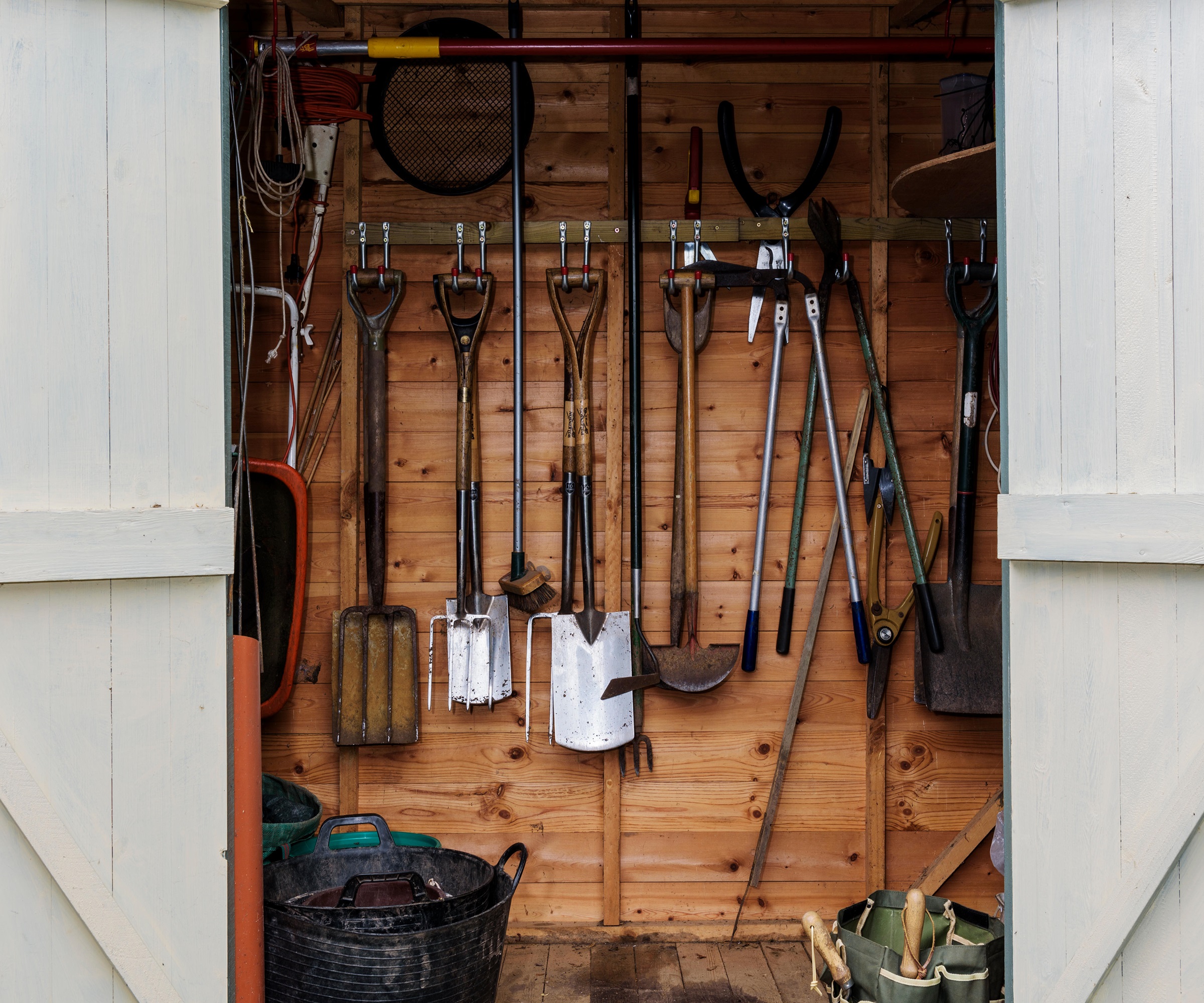
Decluttering your stash of outdoor paraphernalia is the perfect starting point for a neat and tidy garden. Eliminating any broken, damaged or tired tools, play equipment and accessories is not just cathartic but practical too as it will provide a clearer idea of what needs to be stored away and how much space is required. Be sure to conduct a regular audit – late fall, early winter is the perfect time as we are outside less – and be realistic what can be kept, especially if outdoor space is limited.
Clever backyard storage ideas are key to maintaining a tidy garden. Essentials – such as mower, tools, cushions, sacks of compost and BBQ kit – all need their place, so any time spent squeezing in new sheds, garden stores, cubby holes and shelving is a positive step.
‘When working with smaller or unusual spaces, I always encourage thinking vertically,’ says landscape designer Alexander Betz. ‘Incorporating structures like built-in benches with hidden compartments or vertical garden walls not only maximizes storage but also blends seamlessly with the garden aesthetic. If your garden includes a deck or raised beds, consider utilizing the space underneath.
'This hidden area can be enclosed with latticework or wood panelling, and it’s ideal for storing garden tools, outdoor furniture, or even firewood,’ he says. A wide selection of vertical storage sheds, including this tall double door unit can be found at Walmart.
2. Sharpen up lawn and border edges
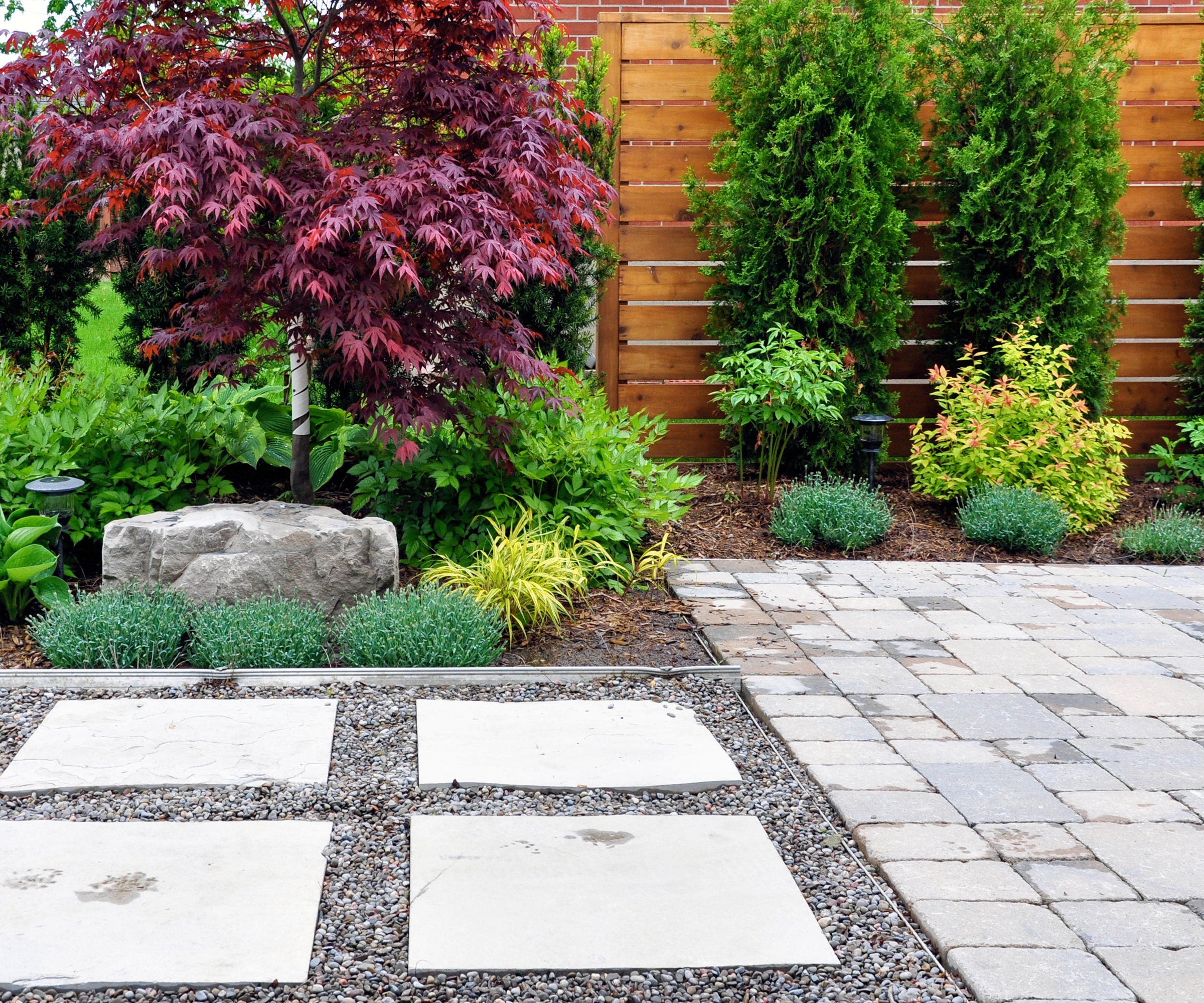
If key elements of your backyard look crisp and on point, then the rest of the space will benefit too. In any modern or contemporary garden design the points where different surfaces meet will always draw the eye, so it makes sense to ensure they are looking their best. Messy or untidy edges are certainly things that will make a yard look cheap.
'Quite often the key to a tidy looking garden hinges on plant selection and hardscaping. By keeping paths well defined with edging, gravel, and stepping stones can aid in a cohesive and tidy design aesthetic,' says horticultural expert Lauren Carvalho.
Metal edging ideas that use strips are a true design favourite, easy to install they can support and retain raised areas of gravel, soil or lawn while adding a neat finish.
Hard paving, whether stone slabs, composite deck or porcelain tiles, often come with coordinating edging strips or units with preformed profiled edges. Plan the layout carefully so these finishing details can be incorporated seamlessly.
If you want a more dramatic look, opt for a bold, contrasting border. Whether it’s a row of brick pavers surrounding stone flags, raised edging stones or cut timber uprights, changing the tone, color or material of edging will instantly upgrade the finish and overall design. Learning how to edge a flower bed is also a transformative project, that can elevate your yard in an instant.
3. Finesse the lawn
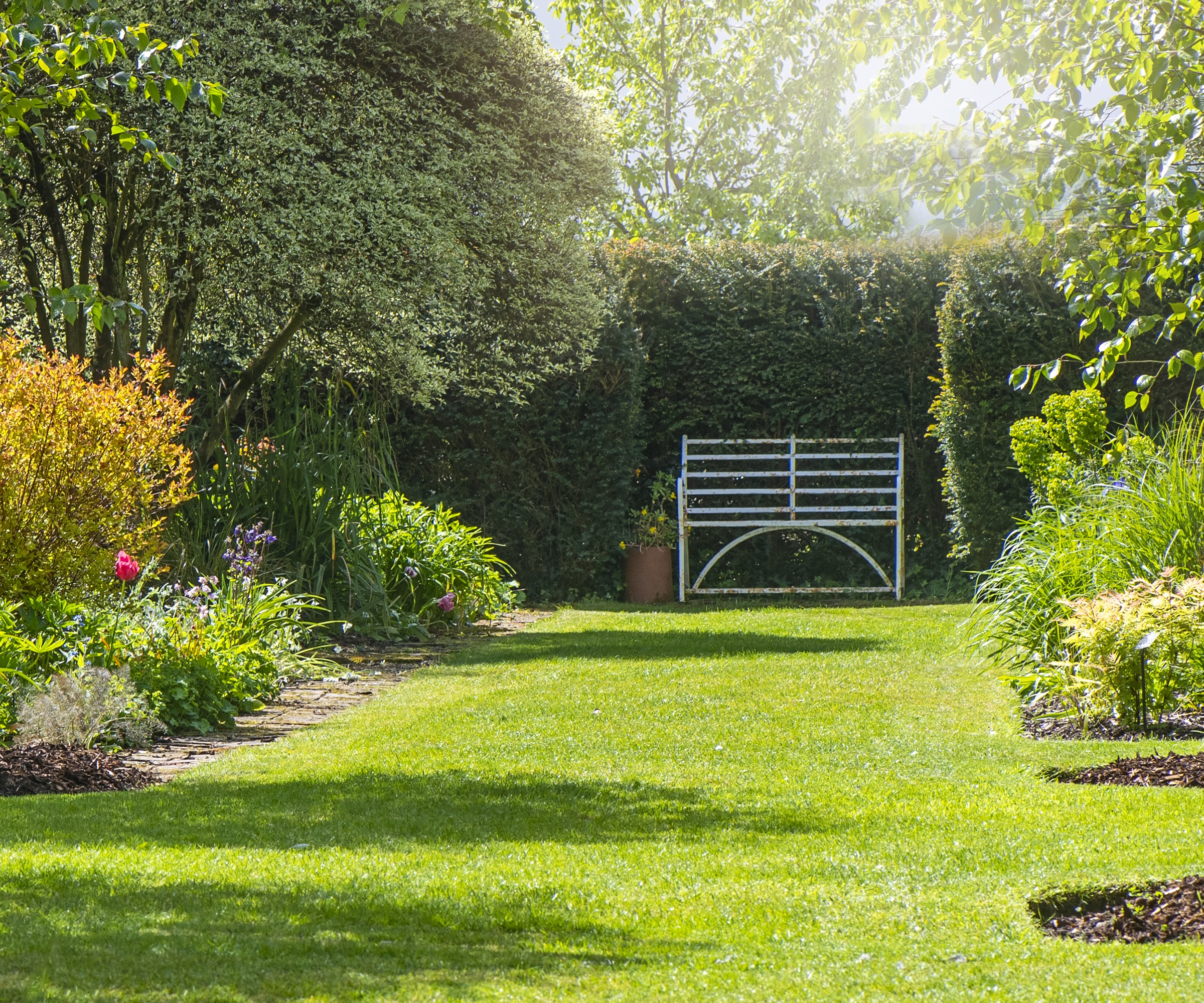
Any area of lawn will always draw attention, so make sure it’s in top condition. In fact, many garden designers will go as far as removing the lawn altogether if they feel it will struggle to thrive. Consider grass alternatives such as clover if you suspect your grass is underperforming or if you just fancy an easier outdoor life.
'Regular maintenance is key. I suggest mowing at the right height to avoid stress on the grass, watering deeply but infrequently, and applying a balanced fertilizer in the spring and fall,' says landscaper and CEO of Plant by Number Alexander Betz. 'In my designs and planting maps, I like to include designated zones for proper lawn care techniques, ensuring the green spaces in the garden stay lush throughout the seasons.'
As mentioned above, neat edges will always sharpen the look of a grassy area, and go someway to making amends if it is in a less-than-perfect state. Trimming round with a manual or battery powered edging tool - available at Walmart - will sharpen the edges and remove any outgrowing blades of grass in a jiffy. Alternatively encircle and reinforce cut edges with an edging material such as this recycled plastic landscape edging coil from amazon.com. If you don't fancy installing physical edging, hand digging a neat ‘v’ shape trench where any border soil meets the sod will also do the job.
Clearing any debris from an area of lawn is an easy spruce up. Powerful leaf blowers including this electric cordless leaf blower from Amazon.com are essential for large grassy spaces.
Many lawn professionals suggest investing in a powerful mowers that chop clippings finely and use them to mulch the lawn, returning valuable nutrients back to the soil, aiding grass health and growth. Widely available, check out the selection at Walmart which includes this PowerSmart Gas 21 inch lawn mower.
4. Screen everyday essentials

Every functioning home has it’s less-than-lovely exterior features such garbage bins, heat pumps, air conditioning units and pool side generators. Crucial to the efficient running of our homes, they are not the most aesthetic garden features and can make outdoor spaces feel cluttered and unkempt. The simple answer is to screen them off, particularly if they in full view from inside the house or next to an alfresco dining or entertaining area.
There are many types of living screen to choose from, including evergreen shrubs, tall bands of grasses or lattice trained fruit trees that will blend in easily with the rest of the garden as well as provide food and shelter for wildlife. Hard screening options are wide ranging and can depend on budget, style preference and how protected or exposed the location is. From woven screens of bamboo and hazel to block walls and cutting-edge laser-cut steel panels, there are plenty of creative avenues to explore.
Growing a hedge is a great way to screen off an undesirable view while also supporting nature. Swapping an eyesore for a lush and leafy barrier is a really smart design move, particularly if you opt for an evergreen shrub such as yew or privet, or hero such as beech that hangs on to its leaves pretty much all year round. There are also plenty of flowering hedges worth considering too. Planting a row of a single plant species will result in an even and dense backdrop, that can be clipped neatly into shape, but a mix of native species will provide seasonal color and a wider resource for garden birds and mammals. A good healthy hedge will need careful planting preparation and regular pruning, it will also take up more space than a fence or screen, so not always suited to smaller yards.
For urban and courtyard gardens, clutter can be a problem. Crafting bespoke garden stores and garbage bin hubs can smarten up the look of any small space, and if they are well designed, can provide opportunities for extra planting too. Green living roofs, built-in planters and vertical trellis supports for climbing plants all add interest and biodiversity to the tiniest patch and help to blur the boundaries between practical storage and soothing greenery.
5. Choose the right compact and groundcover plants
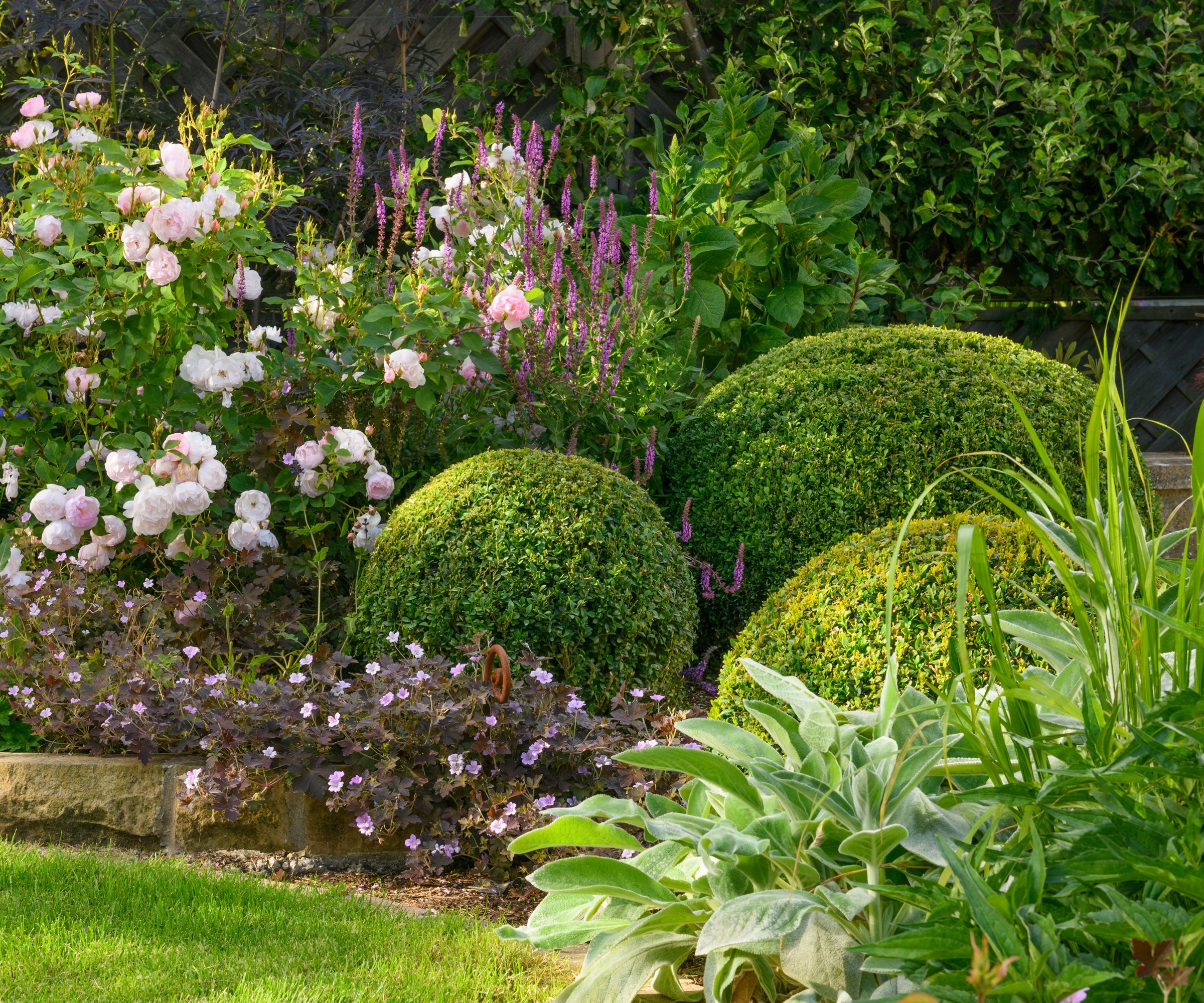
Choosing the right plants for your yard not only depends on the climate, soil conditions, aspect etc but also your design preference and the amount of maintenance you wish to do. 'First, look for plant cultivars with compact growth habit - these will have been bred to constrain untidy growth like long leggy stems or variable height and width,' says perennial and bulb expert Megan Foster.
'Second, consider edging plantings with groundcovers to give your beds a more finished look. Groundcovers can fill in the blank expanses between young perennials and shrubs that are commonly covered with mulch, all while adding a low growing layer of attractive foliage and sometimes flowers as well.
'Much like a great outfit has perfect accessories, groundcovers can really pull a look together and make it feel more ordered and complete in a garden setting.'
Megan also adds that it’s not just for aesthetics alone, there are practical reasons for using these hard-working, ground huggers too. 'There are multiple benefits of working groundcovers into your plan – it becomes a living mulch, helping retain moisture and suppress weeds by outcompeting them. Groundcovers provide an extra bonus for our pollinator friends who can overwinter under the relative protection of that layer of plant material just above the soil.'
Regular deadheading of spent blooms and snipping away dead or dying foliage will immediately spruce up any garden but there are many plants out there that are naturally messier than others. 'Choose plants that don’t produce a ton of leaf litter or other plant detritus and that are naturally low maintenance,' advises plant expert Lauren Carvalho. 'A few I love in my garden this fall are Stachys byzantina ‘Helen Von Stein’ and Teucrium cossonii. Avoid using plants that readily self-sow or spread, this allows you to control your space and maintain your original design.'
6. Fall in love with structure
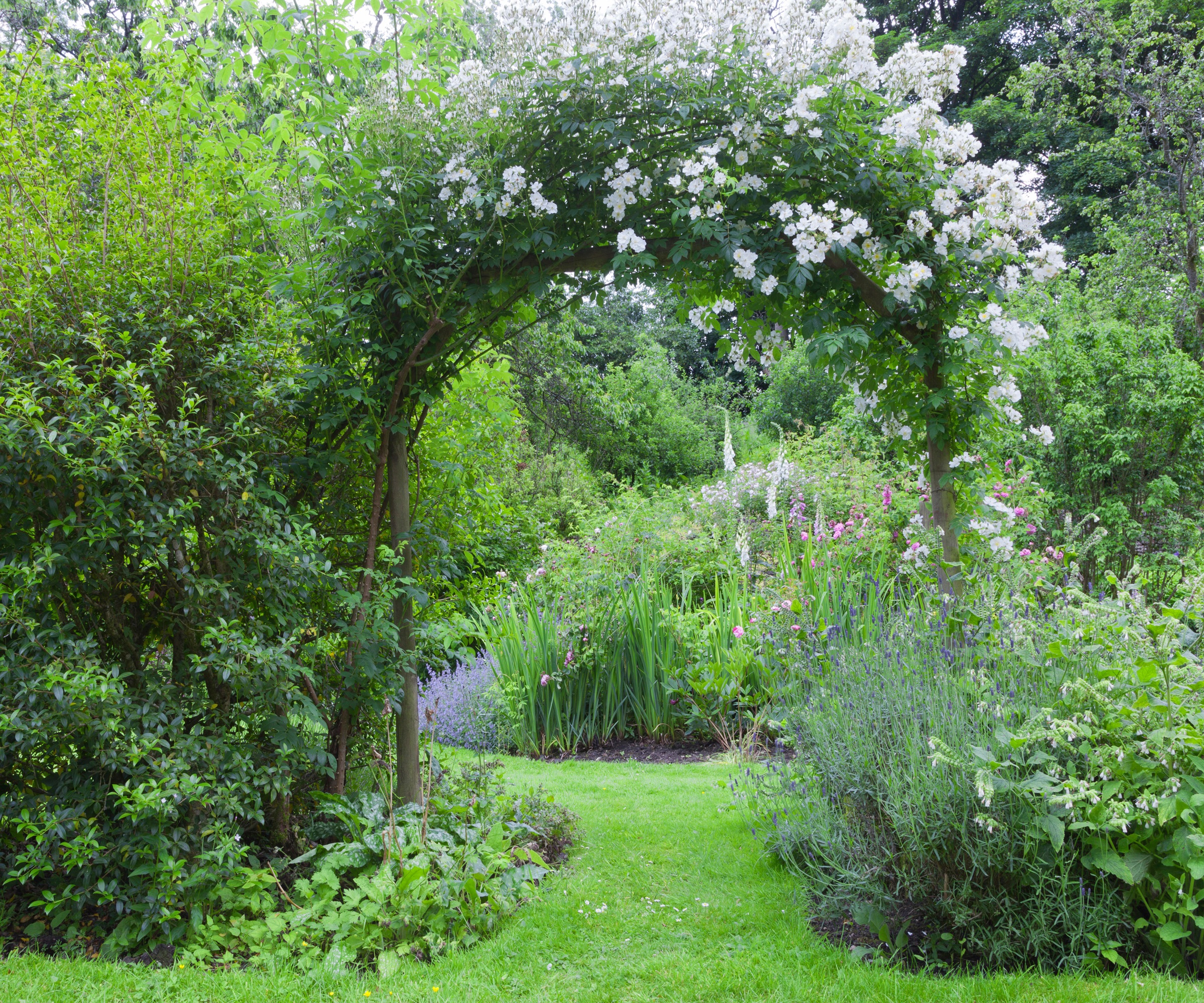
Structure lies at the heart of any good garden. Whether it is in the layout and the intersecting garden zones, in garden features such as arches, pools and pergolas or appearing as distinctive forms within the planting; multi-stemmed trees and clipped topiary, it can give the space height, interest and rhythm. It also helps order the garden, creating a neat and tidy framework.
Climbing plants can be a fantastic feature when trained properly, lending shape and height to any wall, arbor, pergola or obelisk. 'My approach is to use natural elements like trellises, arbors, or even fencing to guide the plants,” says Alexander Betz. I usually suggest training the plants from a young stage, gently tying them with plant ties or bamboo canes, and guiding them along the desired path. For larger plants, lightweight garden netting can be draped over and secured to stakes or a nearby structure.'
Dense, evergreen shrubs that can be clipped into distinct shapes, is another easy but effective way to add structure to a garden. The best plants for topiary include yew, buxus, pittosporum and privet and whether they are clipped into a series of elegant spheres in a border or a pair of statement standards placed either side of a doorway, they create drama and impact. The beauty of these standout features is that they look stunning all year round, quietly sitting amongst herbaceous blooms during the summer before coming to the fore in winter, especially when dusted by frost or snow.
'To maintain tidy hedges and shrubs, the key is to prune regularly but not too aggressively,' says Alexander. 'I advise shaping most shrubs when they’re dormant or just before the growing season, trimming just above a leaf node to encourage healthy growth. Keeping your trees and shrubs maintained creates not just a beautiful, tidy garden, but a healthy one, too.'
7. Enhance your borders
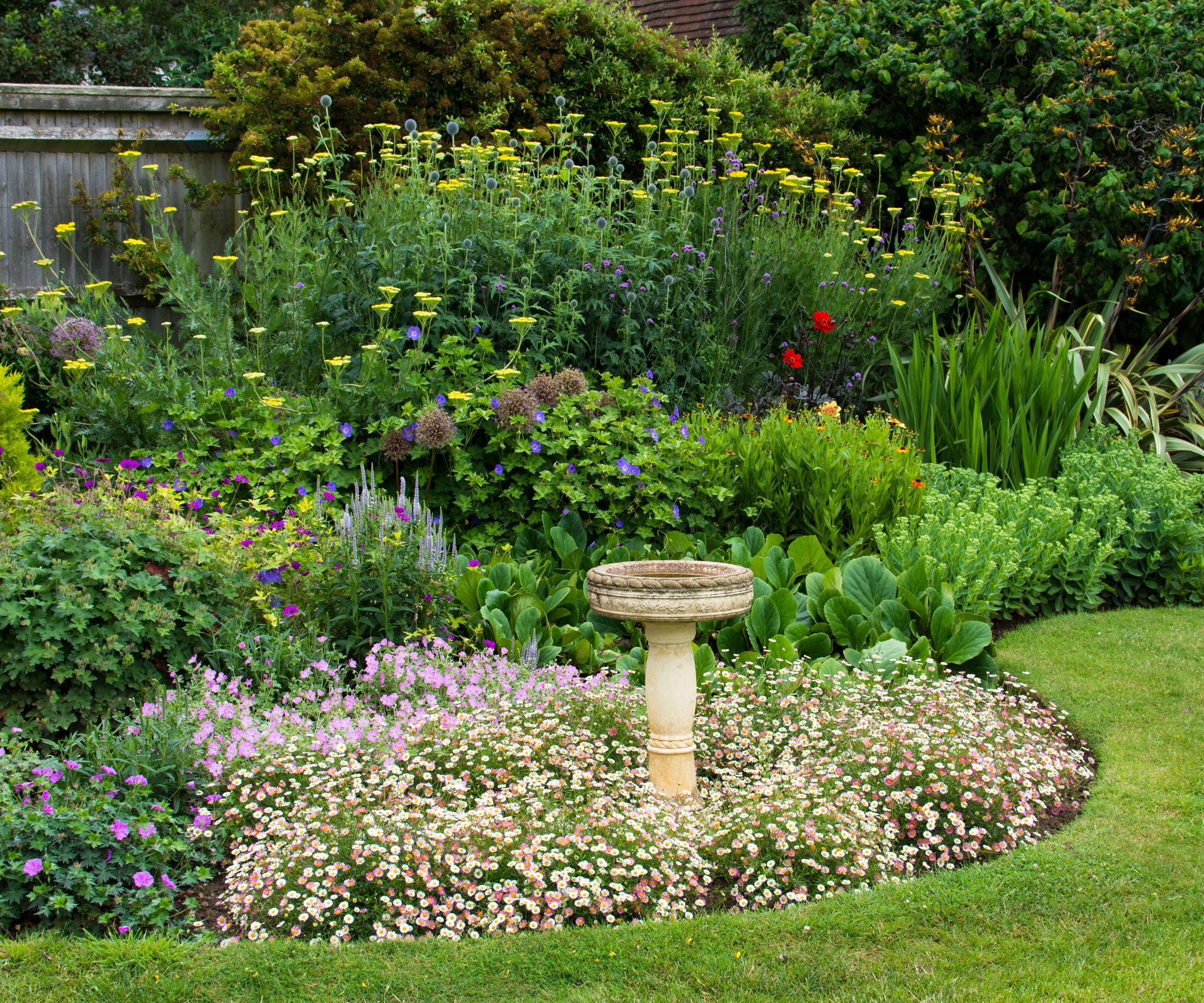
Garden beds are a key part of most backyards. Boost their tidy credentials with a few simple design tricks. 'Plant in height order, tall at the back, to medium, and keep your shortest plants to the front of the bed,' says Megan Foster. 'This orderly arrangement will keep long stems from flopping into your lawn or paths and help the overall feeling of tidiness in the garden.'
Introducing plant supports such as steel obelisks and grow through frames available from Amazon will keep young growth in check and help support top heavy blooms. It also subtly defines the outline of each plant – particular herbaceous perennials such as peonies, salvias and delphiniums – giving a densely planted border a clear sense of rhythm and neatness.
Mulching any bare soil between plants with a layer of bark chippings, leaf mold or compost, will give a satisfyingly dark and even finish that emphasizes the shape of the border and showcases the plants perfectly.
'Mulching is essential for both weed control and water retention,’ says Alexander Betz. 'I recommend organic mulch like wood chips or compost, as it enriches the soil over time. Be sure to spread 2-3” thick and layer evenly around plants without piling it against the stems, which can cause rot. Weed seeds will still land on top of the soil but will help keep new seeds from sprouting from the ground.'
8. Spruce up surfaces
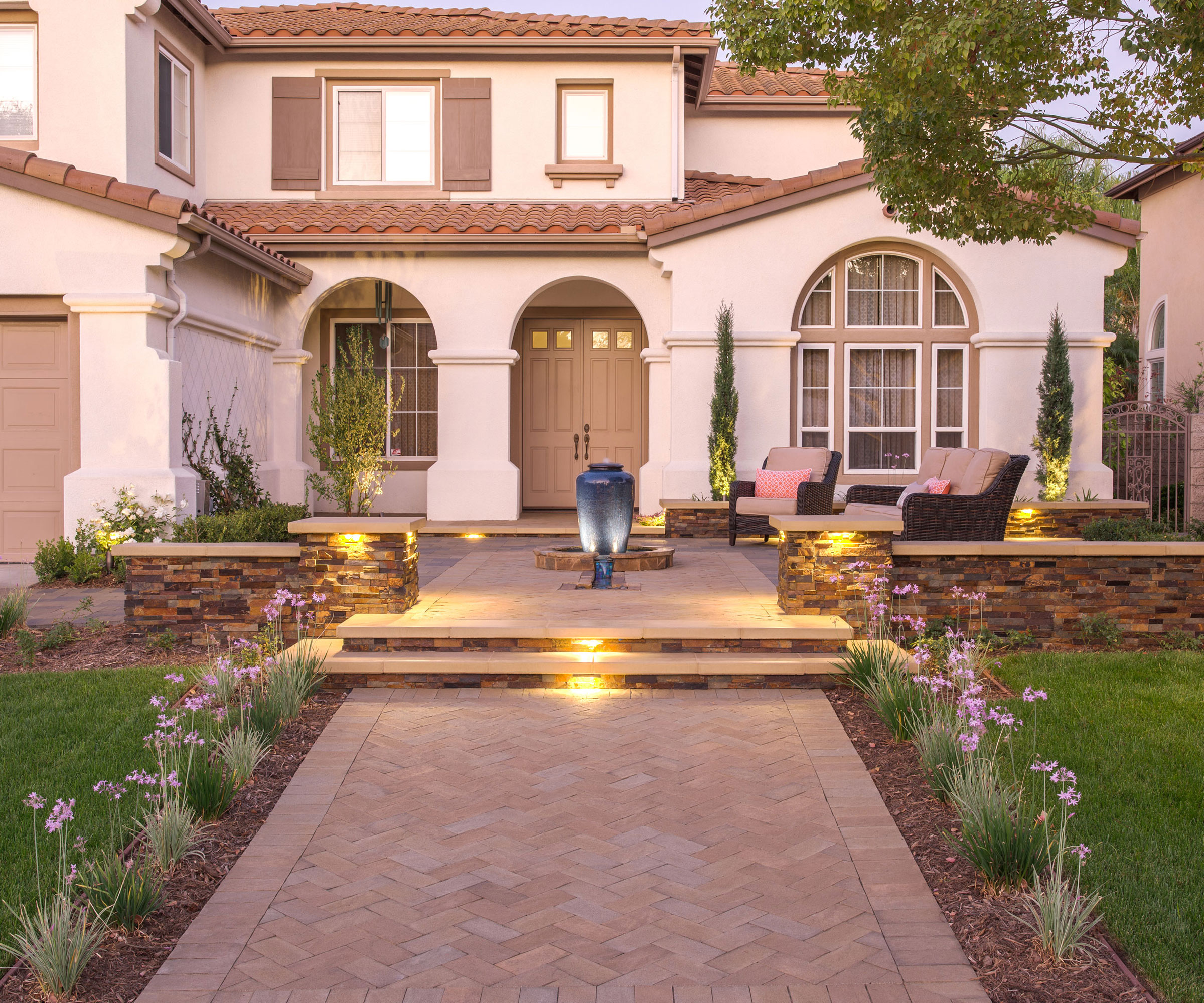
Treating paving, decking, steps, composite cladding and even brickwork to the occasional jet wash is a great way to smarten up your backyard in a jiffy.
Removing unsightly grime and algae, it will also help surfaces from becoming slip hazards, particularly important going into winter and during wet weather. Start with a gentle pressure and work in sweeping motion rather than concentrating in one spot. This will give an even result and eliminate the risk of dislodging any jointing between slabs, bricks or pavers. There are several unusual uses for a pressure washer that could also help with keeping your yard and drive in top condition.
Learning how to clean gravel is well worth the effort, especially if a pale aggregate is chosen for a damp, shady spot. Targeting patches with a hose on a gentle pressure setting can give good results, especially if you use a specialist cleaning solution, but often an easier solution is to replace heavily stained areas with fresh stones.
Fallen leaves, twigs and seed pods can be gathered and removed using a leaf blower or even a long-handled broom and dustpan. Just wait for dry and still weather conditions for the easiest clear up.

Megan is the category manager overseeing perennials and bulbs for AmericanMeadows.com since 2019. With a keen eye for color and passion for pollinators she curates pre-planned gardens for the brand. Her instinct for what gardeners want also drives the spring and fall bulb assortments. She gardens in zone 5 in Vermont.

Lauren is the Horticultural Manager for High Country Gardens. Beginning as an organic produce farmer in the Southwest, she developed a fascination with reducing the use of pesticides through using beneficial insects. This led to a life-altering opportunity learning to propagate native and pollinator-friendly, habitat-providing plants under the tutelage of Horticulturalist David Salman.

Alexander Betz is the CEO and founder of Plant By Number. As a professional landscaper early in his career in a new industry, Alex recognized the need for a more efficient planting method. Plant By Number takes the same design files used for traditional plantings, scales them, and prints them directly onto landscape fabric, a staple in the industry.
FAQs
Can you tidy a garden in winter?
In a word, yes! Winter is a great time to reassess and tidy up your garden. With only the bare bones of the plot on show, you can easily see what space is available, which areas are working and which are not as well as readjusting the shape and position of beds and borders. With less foliage around access to awkward spots in the yard is easier, making any repairs or modifications to fences, paths, terraces and walls much easier.
If snow is covering the ground, spend the time inside decluttering and organising well used clutter hot spots such as sheds, summer houses, glass and pool houses. Squeezing in extra storage units, shelving systems or staging can provide opportunities to streamline work areas, making everything more visible and ensuring it's all to hand.
If you're keen to discover more ways to keep your yard in top condition, then you might find our backyard cleaning tips useful, and what this professional home organizer says about how to organize a yard for summer.
Sign up to the Homes & Gardens newsletter
Design expertise in your inbox – from inspiring decorating ideas and beautiful celebrity homes to practical gardening advice and shopping round-ups.

Journalist Jill Morgan has spent over 20 years writing and editing gardening, interior and property features. Titles she has worked on include The English Home, House Beautiful, Ideal Home, Houzz and Modern Gardens and she writes regularly for H&G as a Contributing Editor. Whilst she is a dab hand at renovation projects and DIY, she is happiest when out digging in the garden or planning a new border.
-
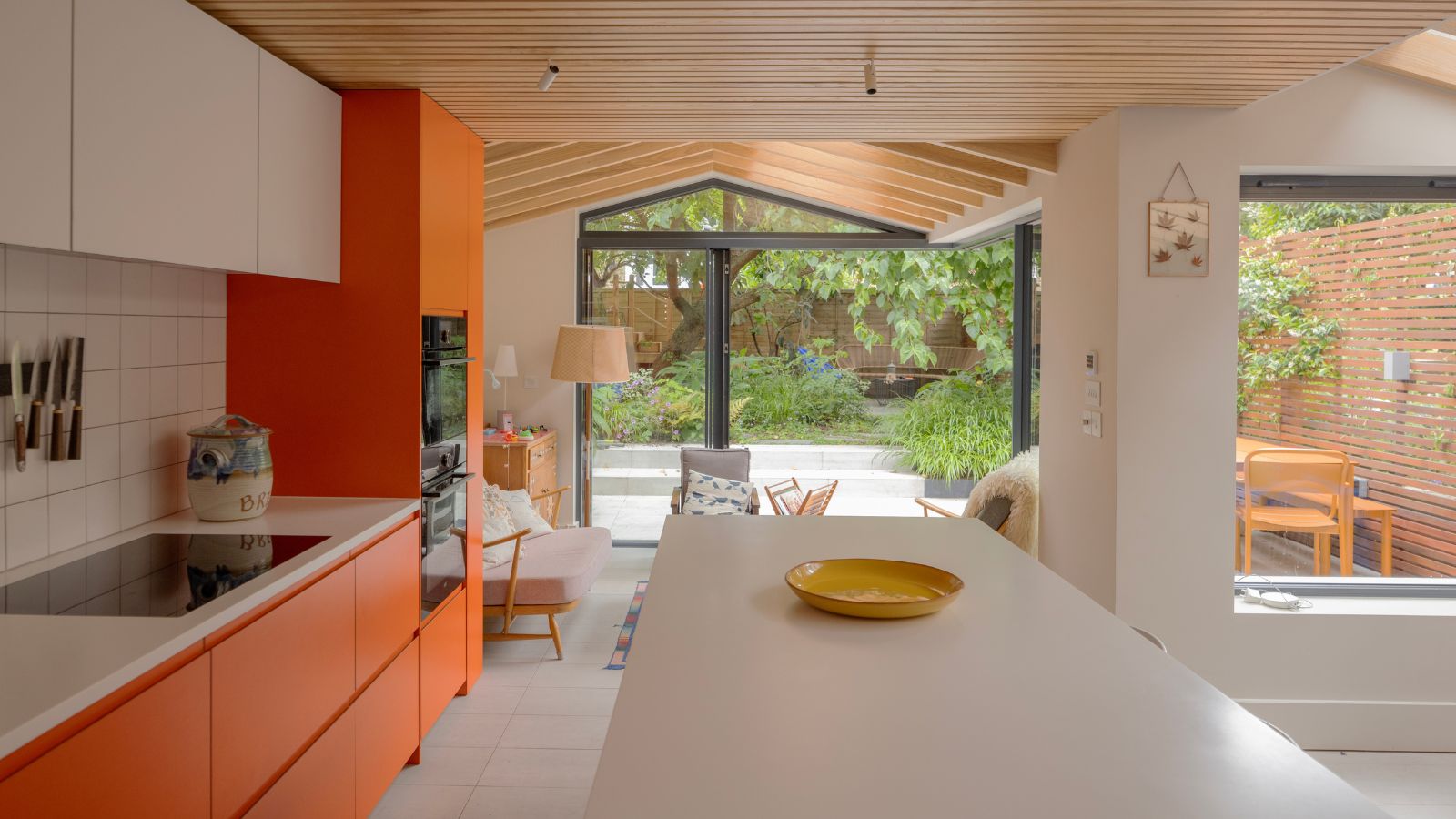 7 orange kitchens that will persuade you this unexpected color is in fact the perfect shade for a warm, personality-filled space
7 orange kitchens that will persuade you this unexpected color is in fact the perfect shade for a warm, personality-filled spaceThese designer-approved spaces prove orange kitchens can be utterly chic
By Molly Malsom Published
-
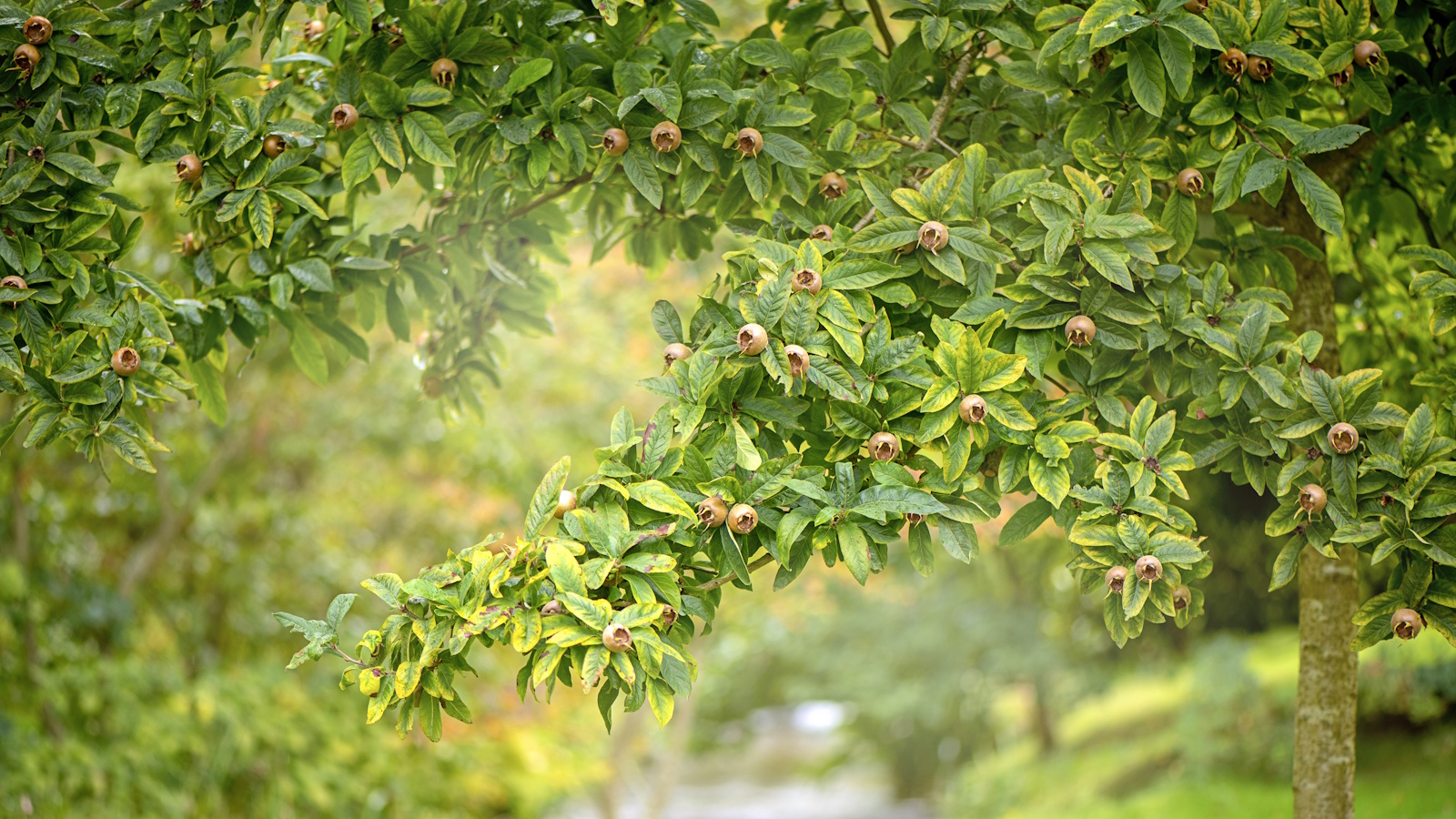 How to grow medlar trees – to enjoy a harvest of unusual fruits from this forgotten heritage species
How to grow medlar trees – to enjoy a harvest of unusual fruits from this forgotten heritage speciesMedlar fruits were once a popular delicacy, yet today, they are a rare find
By Thomas Rutter Published